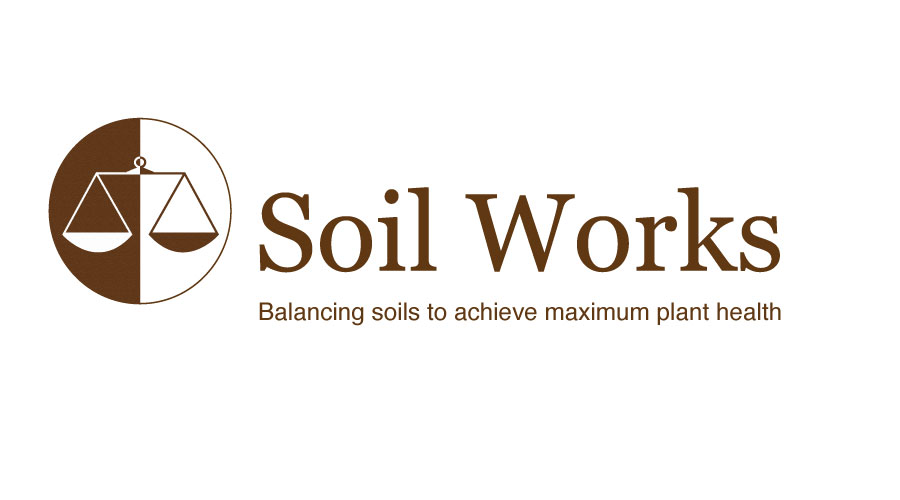Reduced turf quality,
non-functioning root system, water management issues and
suspicious irrigation water quality all pointed to a potential
build up of sodium within the soil profile. Reduced infiltration
rates were inhibiting the ability of the profile to properly flush,
even when exposed to natural rainfall.
Sodium is very
aggressively over powering the other cations (Ca, Mg, K) in the soil
solution as well as on the soil colloid – 30.91% (Grn 17) and 43.68% (Grn
18). As the % saturation of sodium increases (>5%) it has a negative
impact on soil aggregate stability, limiting the movement of water and air through the
soil profile (especially in the upper horizons). As infiltration rates decrease
we see salt accumulation begin to increase, having a negative impact on
the ability of plant roots to access water and nutrients. This is especially
noticeable on shallow rooted turf plants like Poa annua or newly germinating
seedlings. With limited infiltration rates it becomes difficult to
effectively flush the profile, greatly exasperating the problem. A sodic
(sodium) issue can rapidly become a sodic-salt issue which then
quickly impacts plant and soil health.
Reduced soil infiltration (air
porosity <15%) as a result of high sodium and salts, will result in a
severe decline of microbial activity in soils, dramatically reducing rooting
depth, function and density. The fix is to dislodge sodium from soil
colloids, replace it with calcium and relocate sodium beyond the root zone in
the soil profile. Re-establishing the proper balance of Mg and K is also
important. Adding supplemental mineral phosphorus to the
soil will correct any potential phosphorus deficiency – this will
also help to enhance rooting potential.
Sodic soils are typically higher in pH, lower in soil organic matter, lower in carbon and have reduced biological activity. Adding compost to high sodium soils can accelerate the remediation process by providing a sustainable food source for microbes. Carbon in compost is more liable and readily available for microbial use.The activity of microbes will help to reestablish soil aggregate stability, increasing the infiltration rate of soil profile and facilitate the leaching of sodium out of the root zone.
Sodic soils are typically higher in pH, lower in soil organic matter, lower in carbon and have reduced biological activity. Adding compost to high sodium soils can accelerate the remediation process by providing a sustainable food source for microbes. Carbon in compost is more liable and readily available for microbial use.The activity of microbes will help to reestablish soil aggregate stability, increasing the infiltration rate of soil profile and facilitate the leaching of sodium out of the root zone.
To expedite this process it is
necessary to solid tine the greens to a depth that penetrates the organic
portion of the profile (3"). Given the existing shallow roots, it would be
too destructive to pull cores at this time, so care must be taken to minimize
disruption of the upper soil profile (rhizospere).
Prior to this aeration event, apply a high
rate of liquid humic acids (i.e. KaPre Exalt - 35% Humic Acids @
2.5 gl./acre) + penetrating wetting agent (Foliar Pak Command @
24-32 oz./acre). Immediately follow the application with a Pulse
Irrigation Cycle – irrigate until puddling occurs, allow excess
water to dissipate and repeat the process several times throughout an
irrigation cycle.
Repeat this application in 2-3 days before
aeration.
As part of the aeration process,
incorporate 5-10 lbs./M of a soluble fine granulated gypsum
+ 10 lbs./M of Healthy Grow Compost 2-4-3 Holganix. It can be
applied in conjunction with sand topdressing, but it is important to get it
worked well into the aerification holes and avoid surface stratification.
Follow-up with a Pulse Irrigation Cycle.
At this point it is important to again
take follow-up soil and water samples to verify soil
sodium reduction and monitor additional nutrient deficiencies or
imbalances.
If the Soil Report indicates a Base
Saturation imbalance, mineralizing soils with Sul-Po-Mag, Gypsum
or High Calcium Lime can be done in conjunction with a late fall
aeration event. If phosphorus continues to
demonstrates accessibility deficiencies (<250 lbs./acre),
then MAP should be incorporated as well.
A late fall solid tine will also help with
further cleaning up the soil profile. Leaving the holes open will
facilitate flushing with natural precipitation over the winter.
A spring solid tine in lieu of coring
would be beneficial.
Monthly venting (utilizing solid tines) during
June, July and August along with incorporation of Healthy Grow Compost
2-4-3 Holganix would help prevent the build up of sodium. Regular
applications of Root Guard, Bio 12-6-6 and Command in conjunction with
Pulse Irrigation will also help in suppressing sodium accumulations during the
summer months.
Avoiding excessive applications of high salt
index fertilizers – compost based products are best (high carbon, low
nitrogen, reduced salts).



No comments:
Post a Comment